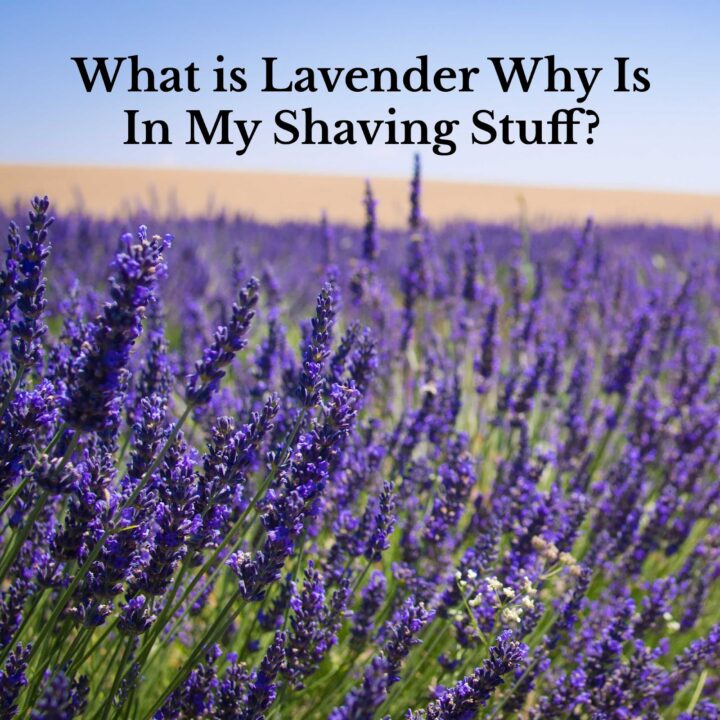
Lavender consists of dozens of species and subspecies, each with their own unique properties. Lavender can be used to make tea, as an essential oil, or in aromatherapy.
Lavender is a genus of flowering plants in the mint family, Lamiaceae. It is native to the Old World and is found from Cape Verde and the Canary Islands, Europe across to northern Africa and east to Iran. The flowers are produced in whorls, and typically last for two to three weeks.
The varieties of lavender can be classified into three broad groups: true lavenders, lavandins, and hybrids. True lavenders are all members of the Lavandula genus while lavandins are interspecific hybrids between true lavenders and other plants from the Lamiaceae family. Hybrids are created by cross-breeding different species of plants from different genera to create new varieties with unique traits or characteristics.
There are many countries that grow Lavender. The quality of the oil can be affected by regional factors such as local climate, geography, and timing of harvest. However Europe is still thought to be the ‘heart’ of Lavender production.
History & usage
Lavender has been used for centuries for a variety of purposes. The most common use for lavender is as an oil, but it can also be used in sachets, drying, cooking, and more.
Lavender is generally thought to be effective at helping with relaxation, sleep, and various other health issues. However different varieties of lavender can have different reactions: some are actually stimulating rather than relaxing!
The Diversity Of Lavender Essential Oils
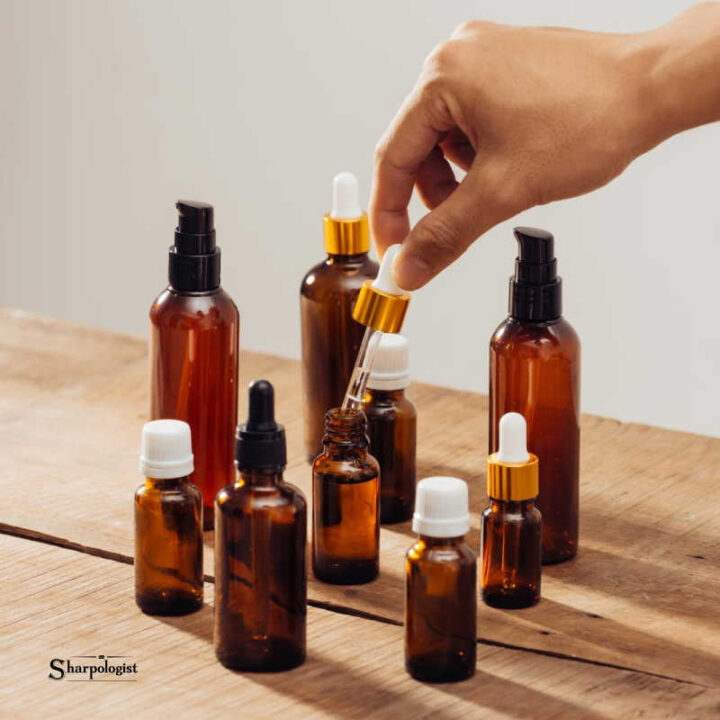
Lavender essential oil comes from the flower buds of different species of lavender plant. The most common type of lavender used for oil is Lavandula angustifolia, also called English lavender. Other popular types include Lavandula x intermedia (lavandin), Lavandula stoechas (French lavender), and Lavandula latifolia (Spike lavender).
Lavender essential oil varieties differ in chemical constituents, aroma, and therapeutic properties. For example, English lavender oil has a higher concentration of linalool and linalyl acetate, which gives it a sweeter, more floral scent. French lavender oil has a higher concentration of camphor, which gives it a more herbaceous scent. Spanish lavender oil has a higher concentration of terpenes, which gives it a more medicinal scent.
In addition, variations of Lavender exist due to different extraction methods.
Lavender essential oil is generally non-irritating and non-sensitizing. This makes it a good choice for people with sensitive skin or allergies. However, as with all essential oils, it is important to do a patch test before using it on your skin.
Where a particular variety of lavender is grown and the species of the flower can be two independent things. For example “English lavender” (Lavandula angustifolia) might be sourced from a grower in France and “French lavender” (Lavandula stoechas) might be sourced from a grower in Greece!
When purchasing lavender oil, always read the label to note the Latin name. This will ensure you know what you are buying and can select the oil that best suits your needs. There are also cases of unscrupulous suppliers who dilute essential oils with carrier oils (like Jojoba) so it’s a good idea to know and trust the source of what you’re buying.
Here are some of the most common and popular lavender variations:
Lavandula Angustifolia
Lavandula angustifolia is the lavender most commonly available.
Lavandula angustifolia may be named true lavender, Bulgarian lavender, English lavender, high altitude lavender, Himalayan lavender, lavender Kashmir, lavender maillette, or any of several other names. The biggest difference among these various L. angustifolia varieties is where the lavender is grown. To illustrate here is a scent profile for Lavandula angustifolia grown in different parts of the world:
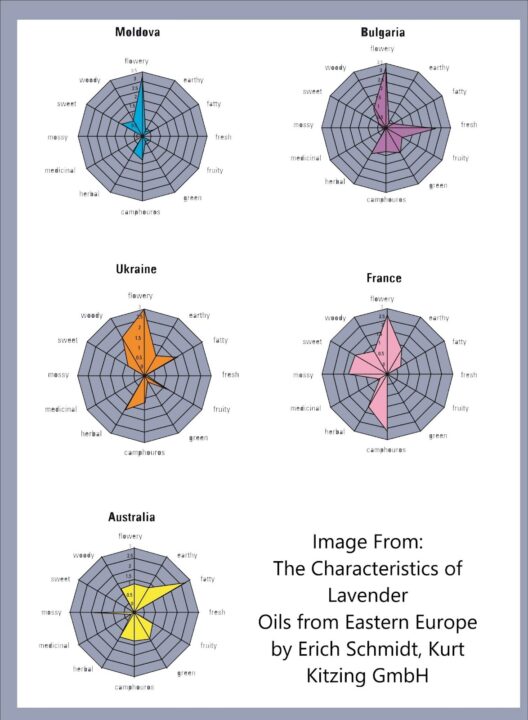
Lavandula angustifolia is the most common type of lavender used for oil, sachet buds, drying, cooking, and more. Lavandula angustifolia has a slightly sweeter-smelling flower with less camphor in its essential oils.
Aromatherapists and researchers study lavandula angustifolia because it contains high levels of linalool and linalyl acetate esters which give it a sweet floral scent with balsamic woody undertones. Camphor is relatively low.
French lavender (Lavandula stoechas)
Lavandula stoechas is referred to as French lavender in the U.K. but called Spanish lavender or topped lavender in the U.S. It is native to Spain but also found in several Mediterranean countries including France, Spain, Portugal, Italy and Greece. It is actually considered an invasive weed in Australia since its introduction there in the early 1900’s.
The “French lavender” moniker was picked up due to its prevalence in French perfume.
French Lavender is a fraternal twin of Lavandula angustifolia, in that it shares many of the same therapeutic benefits of the “true” lavender, but it differs in ways that make it unique. For example French lavender typically has a high linalyl acetate content but contains less linalool compared to Lavandula angustifolia.
The aroma of French Lavender is sweeter with a slightly camphorous scent. The French Lavender scent is used more for its aromatic properties.
Spike Lavender Essential Oil (Lavandula latifolia)
Spike lavender oil is more medicinal and camphoraceous than true lavender. It is distilled from the flowers of Lavandula latifolia. Spike lavender oil is clear to pale yellow in color. It is mainly produced in France and Spain. Lavandula latifolia has a high linalool content but less linalyl acetate.
The aroma is fresh, floral with herbaceous and camphoraceous notes. Unlike other lavenders, spike lavender’s penetrating aroma tends to be more stimulating and head-clearing and some may find it best to use during the day time.
Spike lavender essential oil is helpful in easing joint pain associated with arthritis. It can also help ease respiratory symptoms such as bronchitis, sinusitis or other viruses. Spike lavender essential oil is also used to help ease headaches.
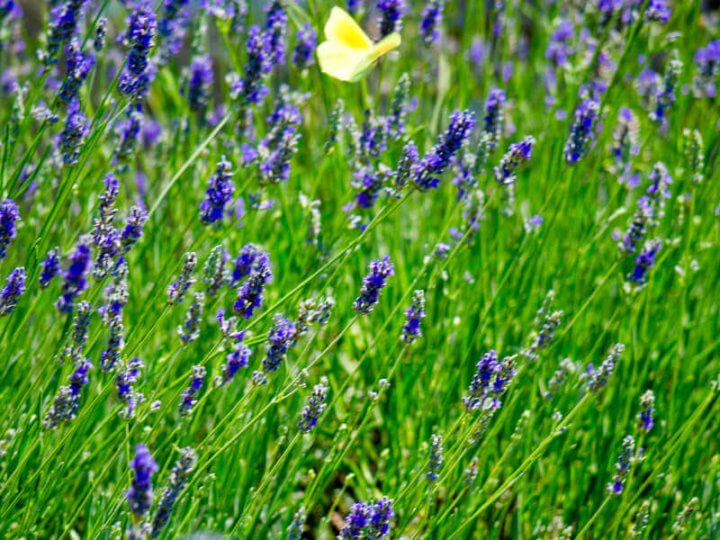
Lavandin Essential Oil (Lavandula x intermedia)
Lavandin essential oil is a hybrid of Lavandula angustifolia and Lavandula latifolia. The resulting plant is hardier and can withstand colder temperatures than either of its parents.
Lavandin essential oil is a great producer of oil, considerably larger than that of L. angustifolia. It has a high yield and the oil is very concentrated. The oil has a strong scent and flavor, making it an excellent choice for use in perfumes, soaps, and lotions.
Lavender vs Lavandin – What are the Differences?
True Lavender Oil
There are many different types of lavender oil, but true lavender oil is the best type for aromatherapy. This is because it has a more fragrant floral scent than other varieties.
True lavender oil can be planted at any time, but the best time would be in the spring as the soil temperature starts to rise. However, it can also be planted in the summer, but you need to ensure that they get enough water until their root system is established.
Lavandin Oil
Lavandin oil has an herbaceous aroma. This means that it smells like a mix of lavender and other herbs.
Lavandin oil is similar to true lavender, but does not measure up in terms of quality. Lavandin oil is a cost effective choice, but it is not as good as true lavender.
However, Lavandin may sometimes offer the best of both worlds, being calming yet strongly antibacterial.
Lavandin oil is frequently used in soap making, lotions, and cleaning products. This is because it is a cheaper alternative to true lavender.
Lavandins are primarily distilled for the perfume and fragrance industries, so although they actually provide the bulk of the lavender being cultivated, they are not commonly sold through essential oil retailers.
Some Wet Shaving Products That Feature Lavender
[Note: Amazon, geni.us, PAA, The Art Of Shaving, TOBS (UK), and West Coast Shaving links are affiliate.]
Lavender is a fairly common ingredient in wet shaving products. Here are some popular “lavender forward” products (in no particular order). I’ve highlighted the type of lavender that the product uses where possible.
However, note that the amount of lavender oil in a shaving product may not be enough to get all of lavender’s benefits.
Caties Bubbles Menage a Lavande
From the Catie’s Bubbles web page:
A limited edition luxury cream soap scented with a blend of 5 high end lavenders from around the world. Designed with the sole intention of being the “Ultimate Lavender Experience.”
I ask Chris from Catie’s Bubbles for a little more detail on the types of lavender he uses here. His response:
“Menage a Lavande does contain 5 different extractions of lavender. Botanically they’re all “lavandula angustifolia” but they’re all different from each other because of the differences a growing region causes and the method of extraction.
Three are from France. One is a traditional 40/42 lavender. It’s called such because they blend different batches of steam distilled oil to achieve a final product that is 40% linalool and 42% linalyl acetate, the two primary aromatic chemicals in lavender oil. The second is lavender mailette, also known as fine lavender. The third isn’t an essential oil but an absolute, which is made by a solvent extraction of the plant instead of distilling it.
There’s one from Bulgaria, a higher elevation growth from the Stara Planina area.
The last one is grown here in the US at the Oregon Lavender Farm.
All the distilled lavenders offer different scent aspects of green and floral where the absolute adds a richness, almost earthiness not present in the others. I tried to make sure all the aromatic aspects lavender can offer are represented.”
Here’s how one reviewer describes it:
“It has the multi-tiered scent complexities that I typically seek when I’m buying a soap, with bright floral top-notes, earthy mid-notes, and sultry-sweet low-notes. There’s a distinct familiarity in this scent that’s comforting, though I can’t seem to put my finger on it. The lack of “medicinal” lavender scent is wise in this blend, but my favorite part of this scent is the delicate sweetness that lingers in my nose whenever I get a whiff.” – reddit
PAA Lavender Planet (Seasonal)
From the PAA web page:
Made with 6 Different Lavenders!
I have cherry picked the best representations of the flower essence from all over the world; Kashmir Lavender Hydrosol or flower water ( Himalayas ), French Lavender Essential Oil, Spanish Lavender Essential Oil, English Lavender, South African and Bulgarian Lavender Absolute
Ingredients: Potassium Stearate, Glycerin, Potassium Cocoate, Aqua, Potassium Kokumate, Sodium Lactate, Potassium Shea Butterate, Potassium Castorate, Sodium Stearate, Potassium Cocoa Butterate, Potassium Avocadoate, Essential Oils
Also available in their “super premium” CK6 formulation.
Ethos Lavender Supreme
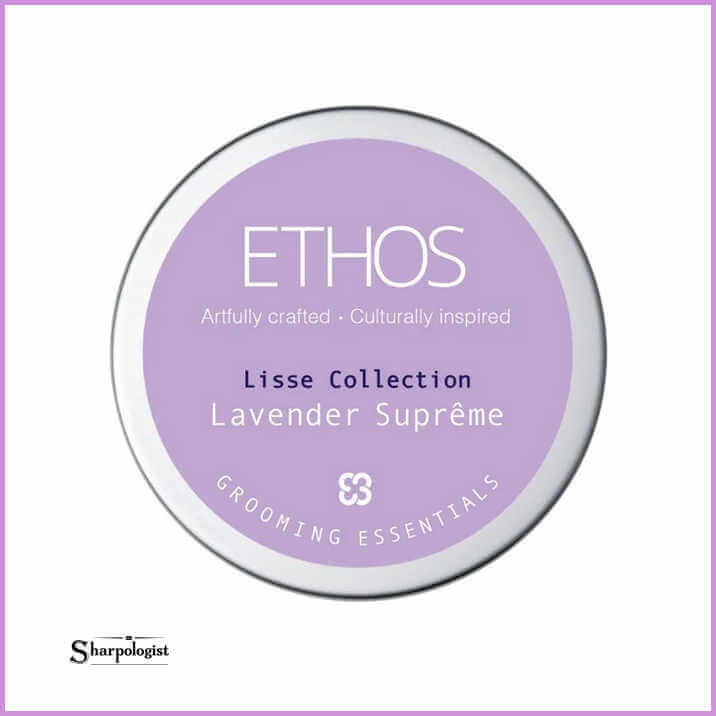
From the Ethos web page:
Lavender Suprême Shave Soap contains nothing but 100% pure Organic Lavender Essential Oil I get from a grower in Provence, France. It’s a wonderful Lavender that is very smooth and not overly camphorous. Lavender has been used in aromatherapy for its calming and healing properties for centuries and makes for a wonderful shave experience, especially if you are a night time shaver. The lather has a nice light feeling to it on the face that provides great cushion, slickness, and post-shave….
Aqua, Stearic Acid, Grass Fed Beef Tallow, Duck Fat, Castor Oil, Coconut Oil, Organic Glycerin, Shea Butter, Potassium Stearate, Sheep’s Milk, Apricot Kernel Oil, Grapeseed Oil, Jojoba Oil, Avocado Oil, Lavender EO, EOS Complex, Aloe Vera, Allantoin, Oat Amino Acids, Olive Oil, Lanolin, Lonicera Capritolim (natural preservative), Chamomile Extract, Honeysuckle Flower Extract, Calendula Extract.
Click/tap here to read my review of this shave soap.
Taconic Lavender Shave Soap
From the Super Safety Razor Web Page:
Our artisan soap maker in New York’s Hudson Valley still crafts Taconic Shave Soaps in small batches to create an incredible lather and provide a smooth and slick shaving experience….
- Large 4 oz. puck – 3 inches round
- 99.8% Natural – Handmade in upstate New York with premium ingredients
- Mild and soothing all natural lavender scent
- Packaged in a protective container
- Fits perfectly in Parker’s Apothecary Shave Mug or any other that can accommodate a 3 inch round soap.
Ingredients: Coconut Oil, *Palm Oil, Safflower Oil, Olive Oil (Grade A extra virgin), Castor Oil, Glycerin (kosher, of vegetable origin), Hemp Seed Oil (unrefined), Purified Water, Sodium Hydroxide (saponifying agent), Sorbitol (moisturizer), Bentonite clay (humectant), Sorbitan oleate (emulsifier), Soybean protein (conditioner), Wheat Protein (conditioner), Essential Oils
* Palm oil is sourced from RSPO suppliers (responsibly sourced)
Super Safety Razors tells me that this soap uses French lavender oil.
Barrister And Mann Lavender Shave Soap
From the Barrister And Mann web page:
Our Lavender fragrance is as smooth as lavender can get. Based on a beautiful aftershave from Wales, this is the scent described by famed perfume critic Luca Turin as “Summer wind made smell” and “the greatest lavender of all time….”
Aqua (Water), Potassium Stearate, Glycerin, Potassium Tallowate, Parfum (Fragrance Oil), Sodium Stearate, Garcinia indica Seed Butter (Potassium Kokum Butterate), Polyacrylamidomethylpropane Sulfonic Acid, Cocos nucifera Fruit Juice (Coconut Milk), Sodium Tallowate, Potassium Ricinoleate, Sodium Lactate, Butyrospermum parkii (Shea) Butter, Trisodium Ethylenediamine Disuccinate, Xanthan Gum, Theobroma grandiflorum (Cupuaçu) Seed Butter, Sodium Cocoa (Kokum) Butterate, Potassium Cocoate, Hydroxethylcellulose, Sodium Ricinolate, Saccharide Isomerate, Caprae Lac (Goat Milk) Powder, Persea gratissima (Avocado) Oil, Sodium Cocoate, Althaea officinalis (Marshmallow) Root Extract, Ulmus rubra (Slippery Elm) Extract
I asked Will from Barrister And Mann for some specifics on the lavender he uses here. Here’s his comment:
It’s a full accord as opposed to just lavender oil, but we use French and a bit of standardized 40/42….
Taylor of Old Bond Street Lavender Shaving Cream
From the TOBS web page:
A classic floral fragrance with essential lavender oil, this luxurious shaving cream creates a rich and high quality lather to ensure the perfect shave.
INGREDIENTS: Water, Stearic Acid, Myristic Acid, Potassium Hydroxide, Coconut Acid, Glycerin, Lavandula Angustifo-LIA, Triethanolamine, Sodium Hydroxide, Methylcloroisothiazolinone, Methylisothiazolinone, CI 17200, CI 42090
Also available from these sources.
Colonel Conk Shave Cream, Lavender
From the Col. Conk web page:
The Rio Grande Lavender scent is created by an exclusive blend of essential oils.
This is a Bold Lavender Blend with a little less flower and a little more masculine edge to it!
Ingredients List: Potassium Cocoate, Sodium Methyl 2-sulfolaurate, Stearic Acid, Glycerol Monostearate, Glycerin, Propanediol, Cetyl Betaine, Alkylpolyglucoside, Decyl Glucoside, Cocamidopropyl Betaine, Water (Aqua), Potassium Hydroxide, Olea Europaea (Olive) Fruit Oil, Sulfated Ricinus Communis (Castor) Seed Oil, Phenoxyethanol, Lavendula Angustifolia (Lavender) Oil, Juniperus Virginiana (Cedarwood) Oil, Fragrance (Parfum), ethylhexylglycerin, Linalool, Limonene, Geraniol
Also available from these sources.
The Art Of Shaving Lavender Shaving Cream
From The Art Of Shaving web page:
Our soothing Lavender shaving cream is made with Lavender essential oil sourced from the USA and Europe that meets the perfume standard for “French Lavender” – a criteria set to ensure consistency and an immediately recognizable lavender aroma….
Ingredients: Aqua (Water), Stearic Acid, Myristic Acid, Glycerin, Potassium Hydroxide, Coconut Acid, Lavandula Angustiflolia (Lavender) Flower Extract, Sodium Hydroxide, Methylparaben.
Also available from these sources.
Castle Forbes Lavender Shaving Cream
From the Castle Forbes website:
…beautifully fragranced only with the purest essential oil, our concentrated formula means that a whole tub will last for several months. This shaving cream is especially good for those who suffer from sensitive skin, and for those prone to razor rash due to lavender essential oil’s extremely soothing properties.
Ingredients: Aqua (Water), Stearic Acid, Aloe Barbadensis (Aloe Vera), Myristic Acid, Potassium Hydroxide, Glycerin, Coconut Acid, Dipropylene Glycol, Lavandula Angustifolia (Lavender Essential Oil), Citric Acid, Triethanolamine, Phenoxyethanol, Sodium Hydroxide, Methylisothiazolinone, Potassium Sorbate, Linalool, Limonene, Geraniol.
Summing Up
In conclusion, lavender is a flowering plant that has a wide range of uses. It is commonly used in shaving products because of its soothing and calming properties. Lavender is also known for its ability to promote healing and reduce inflammation.

Thank Mark for the detailed descriptions of the different Lavenders and their uses. Now I need to add a Lavender shave cream to my den.
Enjoyed the article,lavender my favorite scent.B&M and TOBS in rotation now and enjoying both.
Nice work Mark. Very interesting, thanks
Comments are closed.